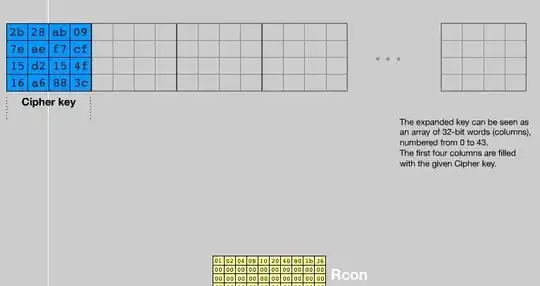just a follow up question with this question..
How does the key schedule of Rijndael looks for keysizes other than 128 bit?
A 256-bit key can still encrypt a block of plaintext in 128 bit?
but in this tutorial, to encrypt 128-bit plaintext, It need 128-bit of secret key also..

can someone provide me a clear explanation about using of 192, 256 bit key to encrypt a 128-bit block of plaintext?
The only thing that I can understand is that If you will encrypt a 128-bit of plaintext, it need to use 128 bit of secret key, to encrypt a 192 bit of plaintext, it need to use 192 bit of secret key, to encrypt a 256 bit of plaintext, it need to use 256 of secret key.. that is the only thing that I know based on my research..